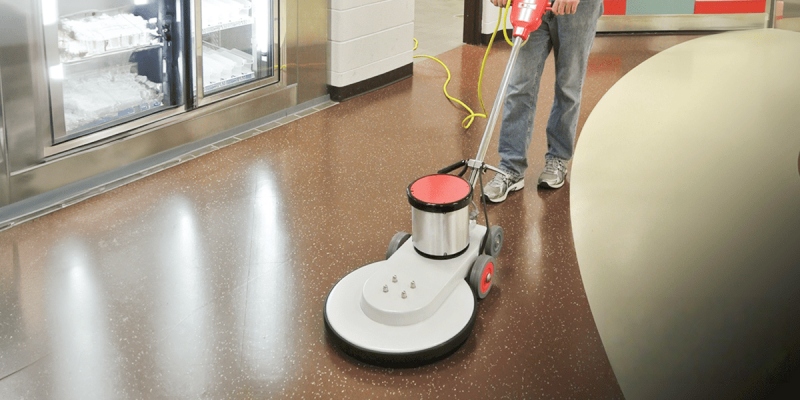Floor burnishing is a high-speed polishing technique aimed at producing a smooth, shiny surface on hard floors. Unlike standard floor polishing, which usually runs at slower speeds, burnishing employs a specialized machine that spins diamond burnishing pads at much higher revolutions per minute (RPM). This quick movement generates heat and smooths the floor, resulting in a reflective, “wet-look” shine that improves appearance and helps maintain durability.
The process begins after a floor has been properly cleaned and prepared. Any debris or residue must be removed before burnishing, as trapped particles can scratch the surface during high-speed rotation. The burnisher’s pads—often made of natural fibers, synthetic blends, or diamond-impregnated materials such as fiber diamond tools or wool felt diamond polishing pads—are chosen based on the floor type and desired finish. When done correctly, burnishing can refresh a floor’s appearance without the need for frequent refinishing, saving both time and maintenance costs.

Burnishing is not only about enhancing appearance; it also protects the floor. The process compresses the surface, forming a denser top layer that resists dirt infiltration and wear from foot traffic. This protective layer can prolong the life of floors in busy areas like retail stores, airports, and offices. Regular burnishing combined with proper cleaning helps maintain floor finishes, postponing the need for stripping and recoating.
In short, floor burnishing is more than just a cosmetic improvement—it’s a vital maintenance practice that preserves floor quality and extends its lifespan. By using the appropriate equipment, pads, and schedule, facility managers can keep floors looking great and durable against daily wear. Properly done burnishing offers both aesthetic appeal and protection, making it a worthwhile investment for any facility.